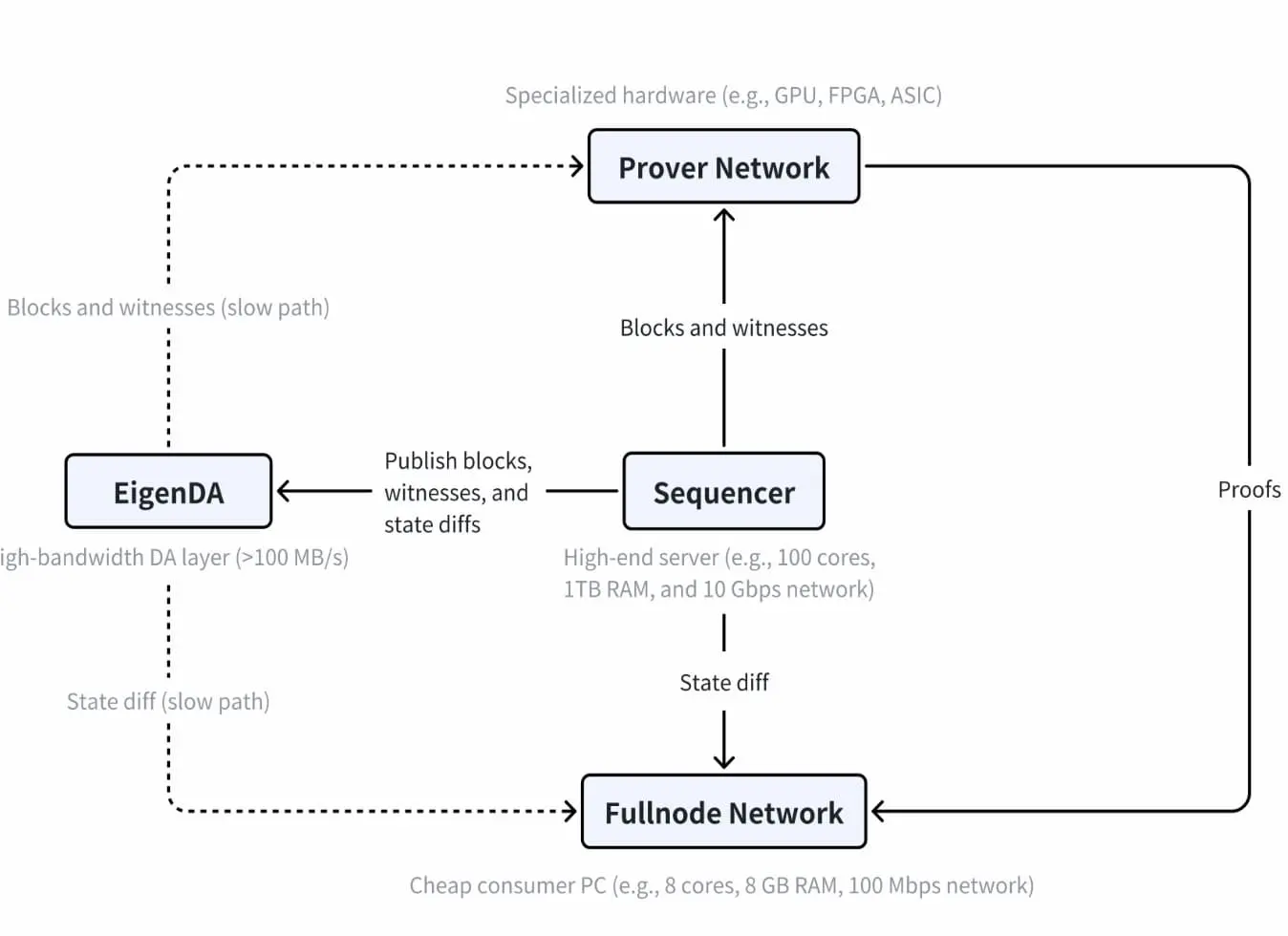Author: Karen, Foresight News
From being ignored to overnight fame, has MegaETH, which aims to build a real-time blockchain, positioned itself at the forefront of blockchain technology? Just yesterday, MegaLabs, the developer of MegaETH, announced the completion of a $20 million seed round of financing led by Dragonfly, with support from Vitalik Buterin, Consensys founder Joseph Lubin, EigenLayer founder Sreeram Kannan, and others.
What is MegaETH?
MegaLabs was founded in early 2023 as a research project aimed at expanding blockchain performance in real-time without sacrificing security or decentralization. It currently has a real-time and high-performance devnet and is developing a real-time blockchain limited only by hardware constraints.
MegaETH believes that the current EVM chain has limitations such as low transaction throughput, difficulty in onboarding complex applications, and slow block generation times. High-throughput blockchains face congestion and reliability issues, and Layer2 has not truly optimized performance.
MegaETH claims to be the first real-time blockchain fully compatible with Ethereum. This technological breakthrough is attributed to MegaETH's full utilization of Ethereum's security, integration of Optimism's fault-proof system, and its own optimized sequencer.
The official statement claims that MegaETH has high transaction throughput, rich computational capabilities, and can achieve millisecond-level response times even under heavy loads. Its goal is to push the performance of Ethereum L2 to hardware limits, narrowing the gap between blockchain and traditional cloud computing servers. MegaETH claims to be able to process 100,000 transactions per second with millisecond-level response times.
MegaETH Team and Investment Background
The main team members of MegaETH have strong backgrounds, including academic elites from top US universities with professional backgrounds in blockchain and computer science, as well as professionals who have held important positions at ConsenSys. Shuyao Kong stated that the current MegaETH team consists of no more than 20 people.
- Yilong Li: Co-founder and CEO of MegaETH, holds a Ph.D. in Computer Science from Stanford University and previously served as a senior software engineer at Runtime Verification Inc.
- Lei Yang: Co-founder and CEO of MegaETH, obtained a bachelor's degree in Computer Science from Peking University in 2018, a master's degree from MIT in 2020, and recently received a Ph.D. in Computer Science from MIT. He is also a member of the Network and Mobile Systems group (NMS) at MIT CSAIL, focusing on efficient consensus and synchronization in distributed systems within blockchain settings.
- Shuyao Kong: Co-founder and CBO of MegaETH, known as "Brother Bing" on Twitter, served as Global Business Development Manager at ConsenSys from October 2017 to April of this year, as indicated by her LinkedIn profile. Shuyao Kong's personal Twitter bio shows her as a Consensys advisor.
- Namik Muduroglu: Founding member and Growth Director of MegaETH, previously worked at Consensys and Hypersphere.
Yesterday, MegaETH developer Mega Labs announced the completion of a $20 million seed round of financing, led by Dragonfly, with participation from Figment Capital, Folius Ventures, Robot Ventures, Big Brain Holdings, Tangent, and Credible Neutral, as well as support from several top angel investors in the industry, including Vitalik Buterin, Consensys founder Joseph Lubin, EigenLayer founder and CEO Sreeram Kannan, Cobie, ETHGlobal co-founder Kartik Talwar, Hasu, Santiago, and Helius Labs co-founder and CEO Mert Mumtaz.
According to The Block, the structure of this round of financing includes equity and token warrants, resulting in a fully diluted token valuation of MegaETH reaching "9 figures," or at least $100 million. When asked if MegaETH's native token will be launched with the mainnet (scheduled for the end of the year), Kong stated that no decision has been made yet.
How does MegaETH operate? How does it achieve real-time performance?
In MegaETH, there are three main roles: sequencers, verifiers, and full nodes. MegaETH achieves node specialization by decoupling transaction execution tasks from full nodes.
Similar to any L2, the sequencer is responsible for ordering and executing user transactions. However, unlike other L2 solutions, MegaETH has only one active sequencer at any given time, eliminating consensus overhead during normal execution.
Most full nodes receive state changes from the sequencer via a p2p network and directly update their local state. They do not re-execute transactions; instead, they indirectly verify blocks using proofs provided by verifiers.

Main components and interactions in MegaETH, Source: MegaETH
MegaETH achieves real-time performance through the integration of Ethereum security, Optimism's fault-proof system, and optimized sequencers, as well as two key technologies: heterogeneous blockchain architecture and highly optimized EVM execution environments. The heterogeneous blockchain architecture allows network nodes with different hardware configurations to focus on specific tasks, improving throughput, latency, and resource efficiency to hardware limits.
MegaLabs stated that MegaETH has higher hardware requirements for sequencer nodes and lower hardware requirements for full nodes. This specialization allows MegaETH to have sequencer nodes 20 times more expensive than ordinary Solana validators (with 5-10 times higher performance) while maintaining full node costs comparable to Ethereum L1 nodes.

Expected hardware requirements for each type of node in MegaETH, Source: MegaETH
MegaETH is set to launch a public testnet in early autumn and the mainnet at the end of the year. It recently launched a 10x builder program called MegaMafia to help developers and founders build applications in collaboration with the MegaLabs team and its advisors.
MegaETH's real-time blockchain is expected to meet the high throughput and low latency requirements of complex applications. For blockchain games, real-time blockchain means a smoother and more realistic gaming experience. For DePIN projects, a more efficient and reliable data on-chain process is needed. Whether MegaETH can demonstrate strong driving force for the development of complex applications such as blockchain games and DePIN, providing an ideal operating environment and translating cutting-edge blockchain technology concepts into tangible reality, we will continue to monitor MegaETH's progress.
免责声明:本文章仅代表作者个人观点,不代表本平台的立场和观点。本文章仅供信息分享,不构成对任何人的任何投资建议。用户与作者之间的任何争议,与本平台无关。如网页中刊载的文章或图片涉及侵权,请提供相关的权利证明和身份证明发送邮件到support@aicoin.com,本平台相关工作人员将会进行核查。




